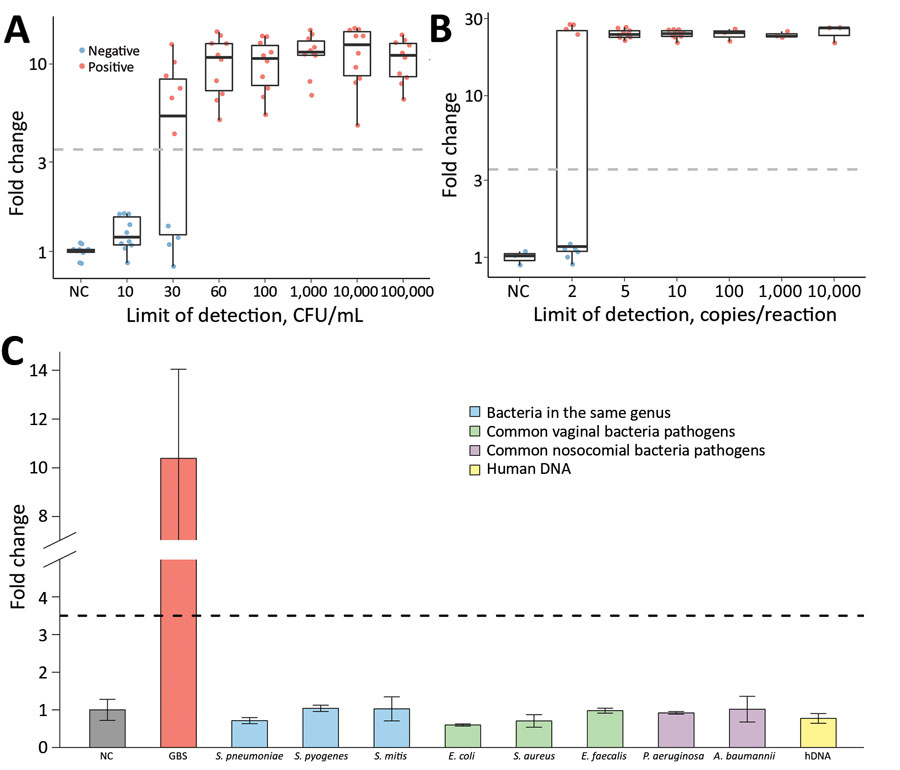Volume 27, Number 9—September 2021
Research
Development and Clinical Evaluation of a CRISPR-Based Diagnostic for Rapid Group B Streptococcus Screening
Figure 2

Figure 2. Analytical assessment of the sensitivity and specificity of CRISPR-based diagnostic for rapid GBS screening. Evaluation was performed by testing contrived negative swab samples with indicated CFUs of GBS (A), different copy numbers of GBS genomic DNA (B), and various microbes as interfering materials (C). GBS, group B Streptococcus. A. baumannii, Acinetobacter baumannii; E. coli, Escherichia coli; E. faecalis, Enterococcus faecalis; hDNA, human DNA; P.aeruginosa, Pseudomonas aeruginosa; S. aureus, Staphylococcus aureus; S. mitis, Streptococcus mitis; S. pneumoniae, Streptococcus pneumoniae; S. pyogenes, Streptococcus pyogenes.
1These authors contributed equally to this article.
Page created: July 14, 2021
Page updated: August 25, 2021
Page reviewed: August 25, 2021
The conclusions, findings, and opinions expressed by authors contributing to this journal do not necessarily reflect the official position of the U.S. Department of Health and Human Services, the Public Health Service, the Centers for Disease Control and Prevention, or the authors' affiliated institutions. Use of trade names is for identification only and does not imply endorsement by any of the groups named above.